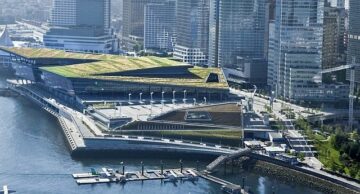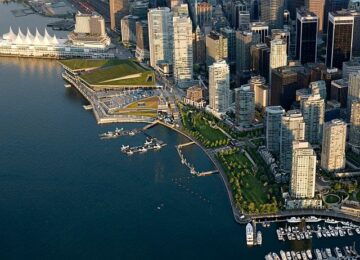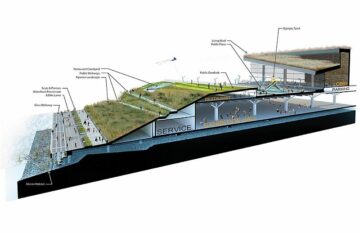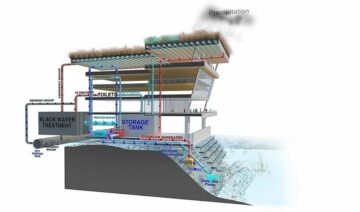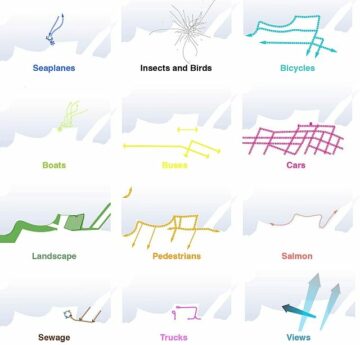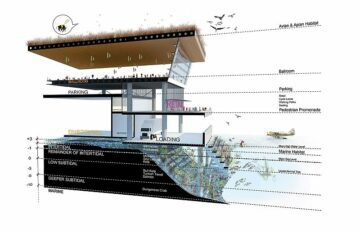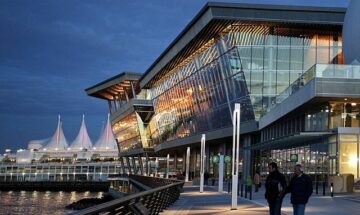Challenge(s)
How can port city installations be developed to achieve greater resilience and carbon neutrality while integrating bioclimatic architectural principles?
Good practice
Apply bioclimatic architectural principles
The Vancouver Convention Centre, completed in 2009, stands as a model of sustainable design for city port installations. Designed by LMN Architects in collaboration with MCM Architects, the centre features a massive 'living roof' that hosts local wildlife, seawater-based heating and cooling systems, rooftop solar panels, and native plantings covering almost six acres. These features contribute to the building's energy efficiency and reduce environmental impact, earning it double LEED Platinum certification in 2010 and 2017. This innovative approach demonstrates how port city installations can achieve greater resilience and carbon neutrality while integrating bioclimatic architectural principles.
This good practice also includes objective 10.1 (Improving and maintaining water quality in the port basins) of the AIVP's 2030 Agenda.
Case study
The Vancouver Convention Centre, completed in 2009, is a cornerstone of the urban ecology strategy for the city’s waterfront, created to address the aim of becoming “the world’s greenest city” by 2020. It is set in 14 acres of land in the former industrial port sector, and 8 feet above the water.
The Vancouver Convention Centre West, designed by LMN Architects in collaboration with MCM Architects, has revitalised the neighbourhood and connected the port to the city in tandem with thinking sustainably and helping the preservation of the local environment. It boasts a massive ‘living roof’ that acts as a habitat for local wildlife and provides natural insulation, contributing to the building’s energy efficiency. The facility’s seawater-based heating and cooling system, combined with its rooftop solar panels, significantly reduces its environmental impact. Covering almost six acres, it is planted with around 400,000 native species and is home to the 240,000 bees that provide the restaurant with honey. The undulating wave design of the roof echoes the nearby mountains but also allows natural drainage. Marine wildlife is also encouraged to thrive by the installation of skirting around the building’s supporting columns. Heating and air-conditioning are provided by seawater pumps running on hydropower, a system that means the building uses 60% less energy than other buildings of its kind. Water consumption is also reduced by 70% thanks to a recycling system, while an on-site installation filters and recycles wastewater, which can then be used to irrigate plants or for other non-potable purposes. These sustainable solutions have garnered a host of awards, including double LEED Platinum certification in the New Construction category in 2010 and later in the Operations & Maintenance category in 2017.
Additional information
Vancouver Convention Centre – Sustainability: Functional, Beautiful and ‘Green’

